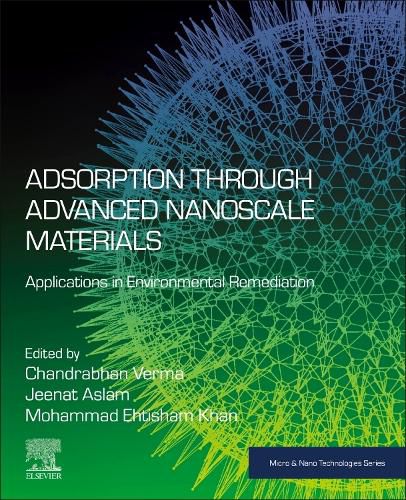Readings Newsletter
Become a Readings Member to make your shopping experience even easier.
Sign in or sign up for free!
You’re not far away from qualifying for FREE standard shipping within Australia
You’ve qualified for FREE standard shipping within Australia
The cart is loading…






Adsorption through Advanced Nanoscale Materials: Applications in Environmental Remediation brings together the latest developments in the utilization of advanced nanoadsorbents in wastewater treatment, pollution control, removal and remediation, gas separation and other environmental applications. The book begins by providing an overview of absorption, adsorbents and nanoadsorbents, introducing properties, classification, synthesis, characterization, enhancement of adsorption capabilities, principles and advantages and disadvantages of nanoadsorbents. Other sections cover the preparation of advanced nanoadsorbents based on specific materials for wastewater treatment, including adsorbents incorporating carbon nanotubes, graphene and graphene oxide, carbon dots and fullerene, polymer nanocomposites, metal oxides, nanoclay, nanofillers, and filtration membranes.
Final sections examine the role of nanoadsorbents in broader environmental applications, including areas such as pollution control and removal and gas separation. Finally, other important considerations are studied, including toxicity and health impact, ecotoxicological effects, commercialization and economic issues, challenges and research gaps, trends, and future opportunities.
$9.00 standard shipping within Australia
FREE standard shipping within Australia for orders over $100.00
Express & International shipping calculated at checkout
Adsorption through Advanced Nanoscale Materials: Applications in Environmental Remediation brings together the latest developments in the utilization of advanced nanoadsorbents in wastewater treatment, pollution control, removal and remediation, gas separation and other environmental applications. The book begins by providing an overview of absorption, adsorbents and nanoadsorbents, introducing properties, classification, synthesis, characterization, enhancement of adsorption capabilities, principles and advantages and disadvantages of nanoadsorbents. Other sections cover the preparation of advanced nanoadsorbents based on specific materials for wastewater treatment, including adsorbents incorporating carbon nanotubes, graphene and graphene oxide, carbon dots and fullerene, polymer nanocomposites, metal oxides, nanoclay, nanofillers, and filtration membranes.
Final sections examine the role of nanoadsorbents in broader environmental applications, including areas such as pollution control and removal and gas separation. Finally, other important considerations are studied, including toxicity and health impact, ecotoxicological effects, commercialization and economic issues, challenges and research gaps, trends, and future opportunities.